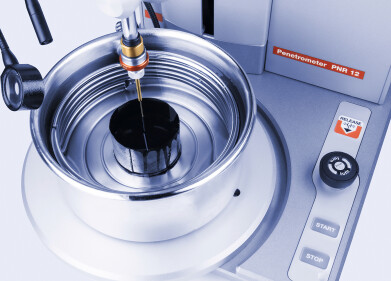Measurement and testing
Third Generation Multiphase Meter
Apr 30 2009
Roxar ASA (Norway) have recently announced the launch of its third generation multiphase meter – the Roxar Multiphase meter 2600 based on its new Zector Technology.
The Roxar MPFM 2600 is the third generation multiphase meter and comes with new measurement principles. The meter’s Zector Technology consists of new field electronics, new electrode arrangements and sophisticated voxel-based signal processing, which will provide higher accuracy than was previously available. The new technology allows for a a large number of simultaneous sectors of the flow to be investigated with a measurementrate of 12,000 measurements per second, giving unparallelled possibilities for interpretation.
The technology allows for an accurate understanding of flow regimes, mixing effects and velocity profiles and can detect rapid changes in compositon, thereby making the measurements even more accurate and consistent than other available technology.The new technology measures multiple oil and gas flow velocities as a function of its 4D location, for example near wall velocity will be different to centre of pipe velocity. Velocities will also vary over time due to composition, turbulence, viscosity and other effects.
The MPFM 2600 comes in a new simple and light-weight design which, at 110 kg (220 lbs) and 650 mm (25.5 inches), is 80% lighter and 50% shorter than previous Roxar multiphase meters. This allows the operators to install the MPFM 2600 on individual wells and in previously inaccessible locations. The standard version of the MPFM 2600 is without radioactive technology and covers the full operating range 0 -100% watercut and 0 - 100% GVF. For special applications or GVF (Gas Void Fractions) above 95% it is recommended to add a compact gamma density system to the meter.
Multiphase meters simultaneously measure oil, gas and water from an oil or gas well and are used in the industry as a ‘speedometer’ for producing wells. If a well is overproduced, the well may be damaged resulting in loss of oil recovery from the field. If a well is under-produced, the operator will loose near term cash flow. The multiphase meters help the operator maximise cash flow through maximum production rates but reduce the risk of overproduction and therefore loss of late recoverable oil. The meters are also used to allocate revenue between different partners in a field.
Roxar is the pioneer in multiphase metering and is today the global market leader. Roxar has developed multiphase meters since 1984, and launched the first generation multiphase meter operating on a single velocity basis (meaning that only the velocity of oil was measured) in 1992. In 2001, Roxar introduced the second generation, dual-velocity meter, where the individual velocities of oil and gas are measured.
The most important new feature of the Roxar MPFM 2600 is the Zector technology which has three main elements: the Voxel-based signal processing, the DP26 electrode geometry and new impedance electronics.
The Voxel-Based Signal Processing defines the flow into separate volumes - voxels or volumetric pixels as they are known. The system, which operates alongside the electrode geometry and field electronics, is in 4D.
Rather than a velocity model consisting of two discrete velocities, Roxar can now boast a multi-velocity system. This improves accuracy and improves the performance in less than perfect flow conditions. Near wall measurements and cross-volume measurements also provide a comprehensive mapping of the dynamics of the flow.
The new compact DP26 Electrode Geometry Sensor allows for measurements in separate sectors in addition to the full cross sectional area. This results in more combinations and more accurate fraction measurements and velocities for each segment.
The electrode assembly also comes with a completely new mechanical design with no internal wires or soldering points, making calibration simpler and faster and ensuring greater consistency between meters.
The new field electronics system allows for capacitance and conductance measurements to be combined. Rather than switching between oil and water continuous mode in a matter of seconds, operators can now switch modes in milliseconds.Furthermore, whereas contact electrodes have traditionally suffered from variable surface resistance, this is overcome by the MPFM 2600 using four of the six electrodes in the 6-electrode geometry for conductivity measurement.
A field replaceable Venturi insert also allows for extended service life and operating range, and removes uncertainties in sizing meters based on uncertain production forecasts. A compact isolation valve and a multi transmitter for pressure, temperature and differential pressure, enables highly accurate differential pressure measurements.
The MPFM 2600 also includes an analogue Blackfin® Processor with low energy requirements. This enables fast and extensive signal processing at the front-end electronics
Digital Edition
PIN 25.5 Oct/Nov 2024
November 2024
Analytical Instrumentation - Picturing Viscosity – How Can a Viscometer or a Rheometer Benefit You? - Sustainable Grease Formulations: Evaluating Key Performance Parameters and Testing Method...
View all digital editions
Events
Jan 20 2025 San Diego, CA, USA
Jan 22 2025 Tokyo, Japan
Jan 25 2025 San Diego, CA, USA
SPE Hydraulic Fracturing Technology Conference and Exhibition
Feb 04 2025 The Woodlands, TX, USA
Feb 05 2025 Guangzhou, China



















